If you are looking wholesale lighting solutions, click here.
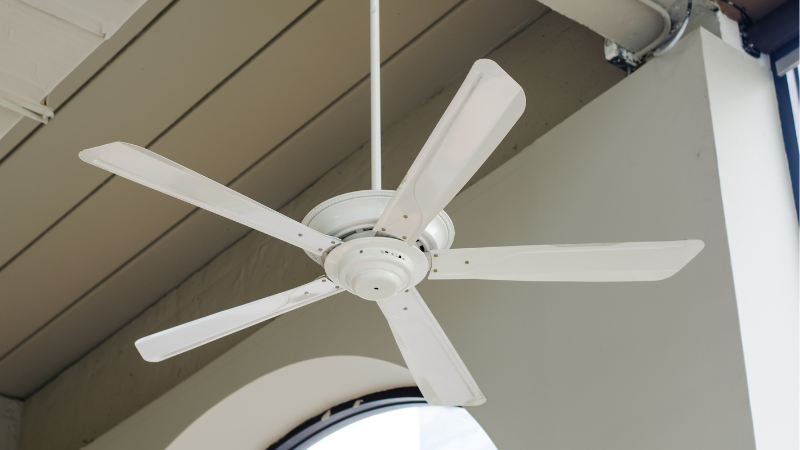
This blog post is going to show you the right ceiling fan directly for various seasons. With extensive experience in the lighting and ceiling fan industry, we know about the suitable ceiling fan direction for year-round comfort.
If you want to learn about the direction of a ceiling fan to enhance your comfort, you are at the right spot.
The direction in which your ceiling fans spin significantly affects the airflow in any space. Modern fans come with clockwise and counterclockwise settings. It allows you to harness your fan blades to create cool and warm airflow.
The counterclockwise spinning of angled ceiling fan blades pushes the cool air downwards, creating a chilling effect. When the fan rotates in a clockwise motion, the warm air descends.
The constant sping circulates the warm air, creating a cozy environment. Setting the right direction of spinning allows you to save energy through efficient usage.
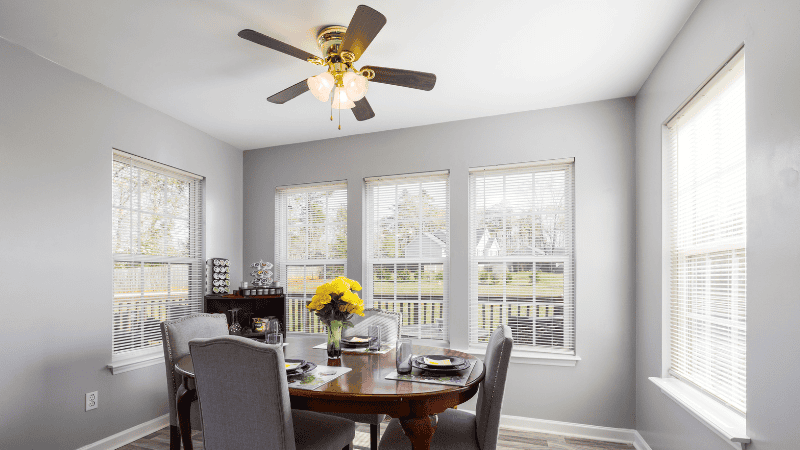
Using the right direction to spin a ceiling fan can significantly improve energy efficiency. You can maintain the right temperature in your space without using an enormous amount of energy.
This also saves energy costs, as you don’t have to spend on installing more devices for air conditioning or heating your space.
Understanding the correct direction of the ceiling fan can also enhance your comfort level. It allows you to maintain a cool environment in summer and a cozy space in winter.
| Season | Summer | Winter |
|---|---|---|
| Direction of Ceiling Fan | Counterclockwise | Clockwise |
| Impact of Direction of Ceiling Fan | It pushes the air downwards. It evaporates the moisture and leaves a cooling effect | It helps redistribute warm air more evenly, creating a warm effect |
In the summer, maximizing the air circulation can create a wind-chilling effect on your skin. It is a key to establishing a cooling feeling.
You can accelerate this process by setting the spinning direction of your fan blades. The counterclockwise rotation of the ceiling fan pushes the air downwards. The cool breeze promotes evaporation of sweat, leaving a cooling effect.
Constant airflow also prevents the build-up of hot air pockets and helps maintain a consistent and pleasant temperature throughout the space.
By optimizing your ceiling fan’s rotation during the summer, you can elevate your comfort and minimize your reliance on air conditioning.
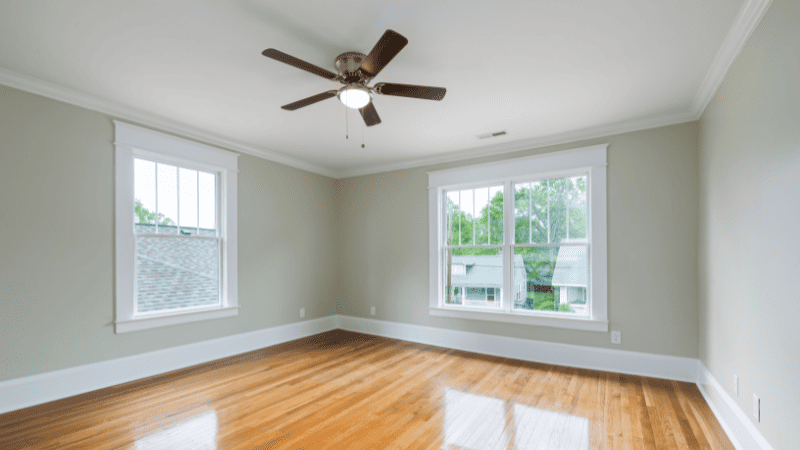
Ceiling fans don’t lower the room temperature. They make you feel more relaxed by circulating the air to vaporize the moisture on your skin. However, ensure that your fan is spinning counterclockwise.
The Department of Energy estimates that using a ceiling fan with your air conditioner can increase your thermostat settings by up to 4 degrees. The best thing about this is that you don’t have to sacrifice your comfort level.
A 2-degree change in your thermostat setting can help you save about 14% of energy expenses, and a 4-degree rise in your thermostat setting saves you considerable cost.
In colder months, your heating system creates warm air. As this warm air is light, it rises to the ceiling. In contrast, cooler air is heavier and shrinks to the floor. Your ceiling fan can help you create a cozy environment in chilling months.
Reversing the spinning of your ceiling fan redistributes warm air more evenly. The clockwise rotation of a ceiling fan pushes the warmer air downwards.
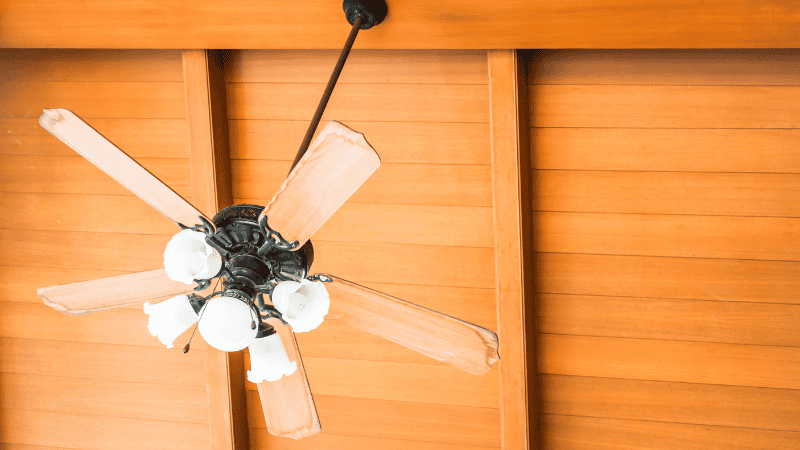
It ensures that warm air is not wasted near the ceiling and instead keeps the room comfortably warm. The warm airflow makes you feel cozy without changing the thermostat settings.
The slow clockwise spinning of your ceiling fan minimizes your heating cost.
This rotation improves the distribution of warm air in your space by setting a low temperature on your heating system. It reduces the need for your heating system to work as hard. This setting saves up to 15% of your heating costs.
According to the U.S. Energy Information Administration, an average US household spends about 52% of utility bills on heating or cooling costs every month.
However, the efficient use of ceiling fans can reduce these expenses.
Your ceiling fan is a major contributor to controlling the comfort of your residential and commercial space. Optimizing its performance can help you maintain the right temperature.
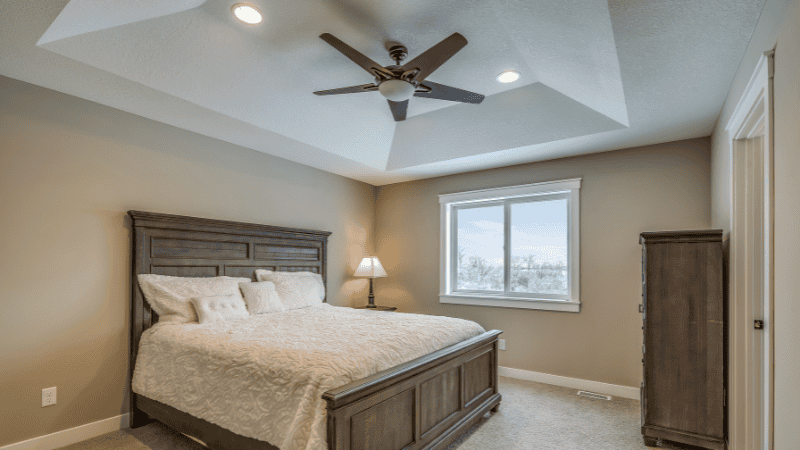
The following aspects can optimize the performance of your ceiling fan:
The speed of your ceiling fan is key to achieving optimal performance. Increasing the fan speed increases the airflow in your space during hot weather.
Faster air circulation creates a cooling effect by evaporating sweat. It makes a room feel several degrees cooler than it is.
On the other hand, slower fan speeds circulate air more gently. It allows the even distribution of warm air throughout your space without creating a wind chill effect.
If you do not feel comfortable after changing the direction of your fan’s rotation, check the fan blade shape. The shape of the blade can also impact the distribution of air. Change the fan blades if they are too old.
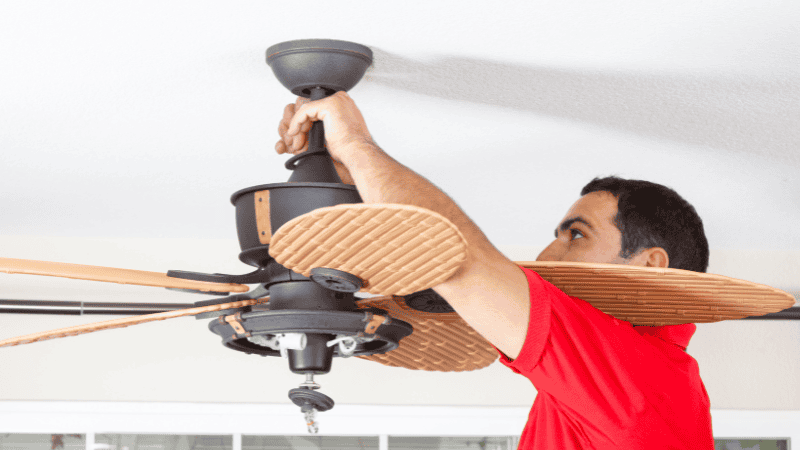
Switching off your ceiling fan when you don’t need it is a convenient way to conserve energy and reduce electricity expenses.
Unlike air conditioners that cool the rooms, fans create a wind chill effect that makes you feel cool. Therefore, leaving a fan running in an empty room wastes energy.
Consider setting the ceiling fan to turn on and off with the light switch for convenience. This practice ensures the fan only operates when needed and simplifies seasonal changes.
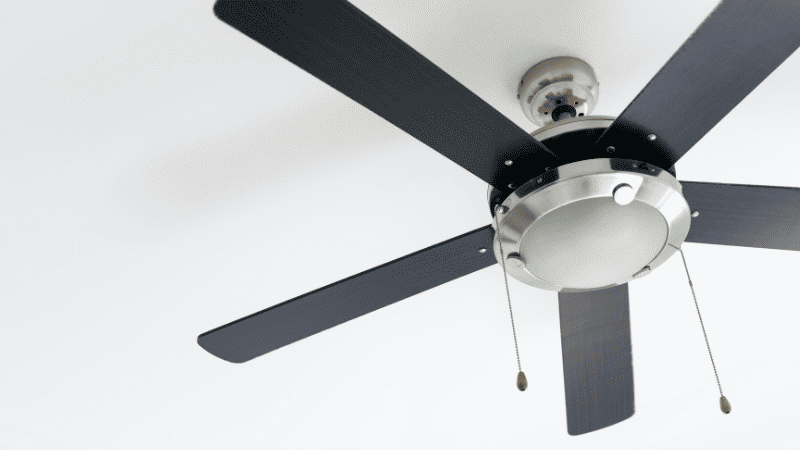
The size of your ceiling fan can also affect its operations and airflow. For your large room, you need a large fan with longer blades to distribute the fresh air. A small fan can’t maintain sufficient airflow for a cooling or warming effect.
In contrast, if you have a small space, you need a small ceiling fan with shorter blades that is effective for your space. A larger fan consumes more energy and may not circulate air effectively.
Proper installation and regular ceiling fan maintenance significantly influence its operations. The following steps will guide you about manual and remote control installation and maintenance of a ceiling fan:
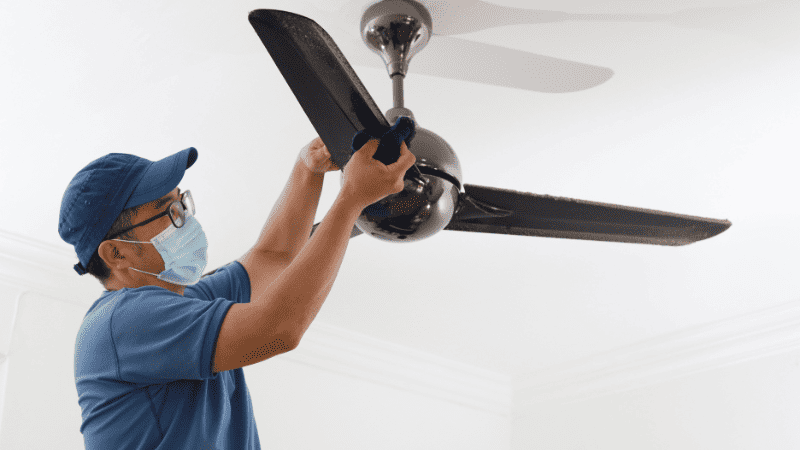
Adjusting the winter and summer fan direction is necessary for maintaining a comfortable atmosphere in any space. Here are the steps to manually adjust the direction of ceiling fans:
Before adjusting the ceiling fans, turn them off. Ensure the blades have completely stopped. Locate the direction switch. It may vary between different models of fans.
In most models, it is present just above the blades on the motor housing. Flip the switch. It will reverse the direction of rotation of your fans.
After flipping the switch, secure all the screws and bolts to prevent any wobbling. You also need to lubricate the parts of your fan to keep them friction-free.
Additionally, ensure that the fan is balanced correctly. An imbalanced fan can wobble and cause wear on the motor. Proper maintenance enhances the fan’s efficiency and extends its lifespan.
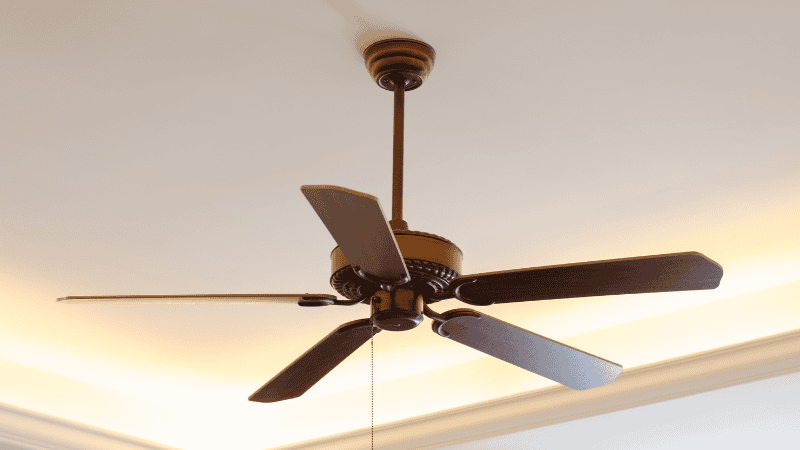
Modern ceiling fans have remote controls or smart functionalities. These save you from manually adjusting the rotation switch every season.
For fans with remote controls, adjusting the direction is simple. Hold down the fan button on the remote until you hear a beep. It indicates the direction has shifted.
Some smart ceiling fans have integrated systems you can control via a smartphone app. These apps offer an intuitive interface for changing the fan’s direction, setting schedules, and adjusting speeds.
The app control lets you easily switch modes for different seasons, enhancing comfort and energy efficiency.
How can I tell if my fan is spinning the right way?
You can tell if your fan is spinning the right way by standing under it. In summer, the fan should spin counterclockwise. While in winter, the fan spin should be clockwise.
What if my fan doesn’t have a direction switch?
Nearly all fans come with a direction switch. However, if your fan does not have a direction switch, you need to reverse the motor wiring. Consider upgrading your fan with the latest model.
Can using the wrong fan direction cause damage?
No, using the wrong fan direction won’t cause damage to the fan. However, it may reduce comfort and energy efficiency, as the fan won’t circulate air optimally for the season.
All in all, maximizing year-round comfort with the right direction of ceiling fans involves understanding and leveraging their dual functions. Their effective system creates a cooling effect in summer and a warm feeling in winter.
Choosing the right size fan is also crucial. A small ceiling fan is sufficient for cooling rooms up to 100 square feet. However, you need large fans if you have a great room or a large space.
So, what do you think which ceiling fan direction will be suitable for your space? Please share your thoughts with us in the comment section.
For effective performance of your ceiling fan in summer and winter, it should be efficient and durable. Risun is among the top suppliers of ceiling fans. Contact us to get the right ceiling fan for your space and leverage its spinning directions.
Comprehensive Lighting Solutions for MRO Wholesalers and Professionals
send your inquiry
Hi, I'm the author of this post, and I have been in this field for more than 15 years. If you want to wholesale lighting fixtures or lighting related product, feel free to ask me any questions.
Learn More >>Download our catalog to view all of our lighting products.
Ready to get started ?
Send Your InquiryOur team will get back to you promptly

please
download
Get notified about new products
Our team will get back to you promptly!
Add your first comment to this post